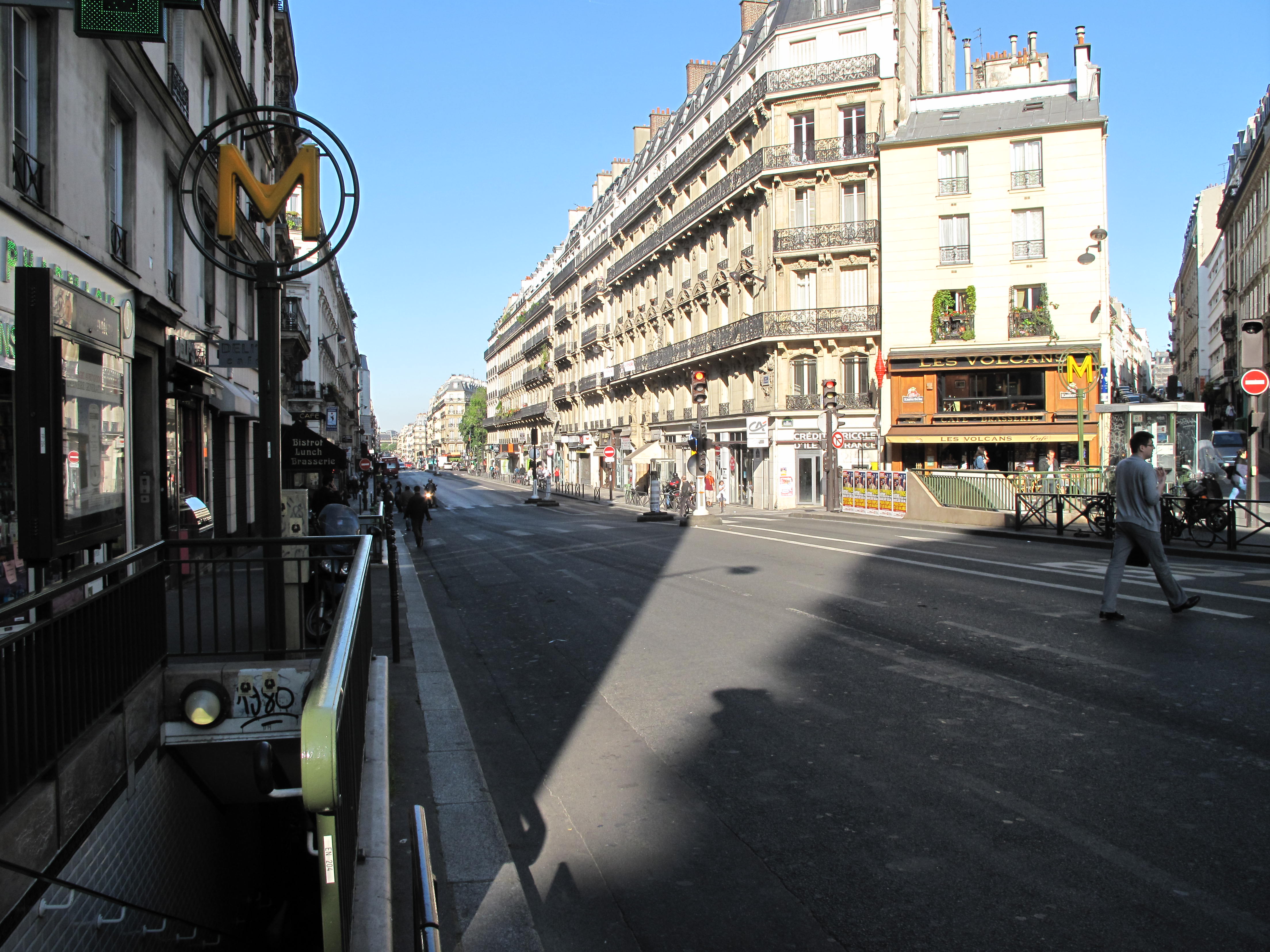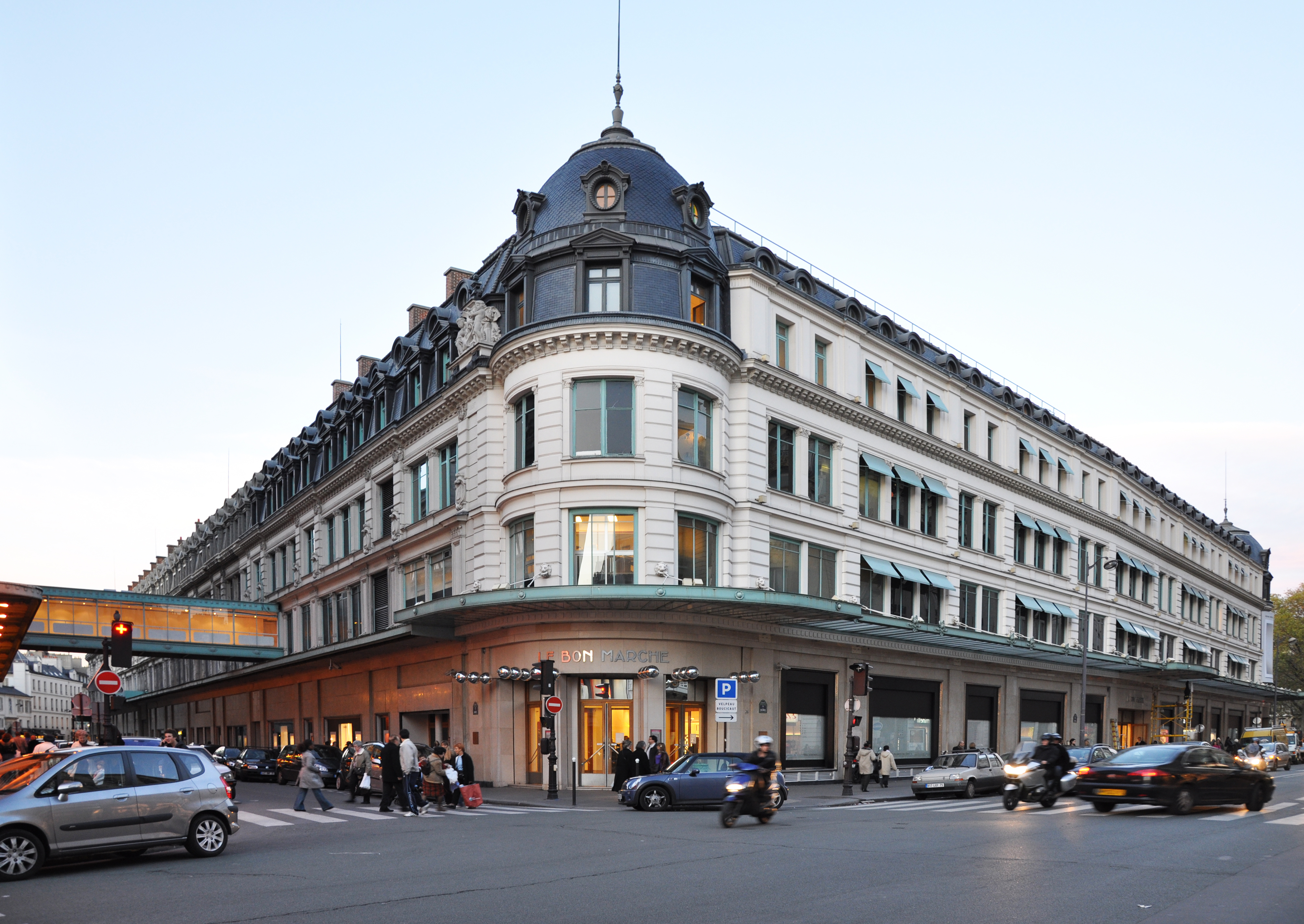|
Galeries Lafayette
The Galeries Lafayette () is an upmarket French department store chain, the biggest in Europe. Its flagship store is on Boulevard Haussmann in the 9th arrondissement of Paris but it now operates in a number of other locations in France and other countries. In 2019, Galeries Lafayette recorded earnings of over five billion euros.« Galeries Lafayette. Dans les coulisses d'une machine à vendre », ''Le Monde Magazine'', 19 December 2009, p. 29 It is a part of the company Groupe Galeries Lafayette and has been a member of the International Association of department stores since 1960. History In 1894, Théophile Bader and his cousin Alphonse Kahn opened a fashion store in a small haberdasher's shop at the corner of rue La Fayette and the Chaussée d'Antin, in Paris. In 1896, their company purchased the entire building at 1 rue La Fayette; in 1905 they acquired the buildings at 38, 40 and 42 boulevard Haussmann and 15 rue de la Chaussée d'Antin. Bader commissioned the architec ... [...More Info...] [...Related Items...] OR: [Wikipedia] [Google] [Baidu] |
Subsidiary
A subsidiary, subsidiary company or daughter company is a company owned or controlled by another company, which is called the parent company or holding company. Two or more subsidiaries that either belong to the same parent company or having a same management being substantially controlled by same entity/group are called sister companies. The subsidiary can be a company (usually with limited liability) and may be a government- or state-owned enterprise. They are a common feature of modern business life, and most multinational corporations organize their operations in this way. Examples of holding companies are Berkshire Hathaway, Jefferies Financial Group, The Walt Disney Company, Warner Bros. Discovery, or Citigroup; as well as more focused companies such as IBM, Xerox, and Microsoft. These, and others, organize their businesses into national and functional subsidiaries, often with multiple levels of subsidiaries. Details Subsidiaries are separate, distinct legal entities f ... [...More Info...] [...Related Items...] OR: [Wikipedia] [Google] [Baidu] |
Maurice Dufrêne
Maurice Dufrêne (1876–1955) was a French decorative artist who headed the ''Maîtrise'' workshop of the ''Galeries Lafayette'' department store. Life Maurice Dufrêne was born in Paris in 1876. His father had a wholesale commodities business. Dufrêne would collect left-over pieces of wood, cardboard and fabric from his father's workplace and turn them into decorative artworks. He studied at the ''École des Arts Decoratifs''. Originally he planned to be a painter. Dufrêne found a position as a manager and furniture designer at ''La Maison Moderne'' of Julius Meier-Grafe, whose showrooms displayed rooms decorated in Art Nouveau style. There he worked with designers such as Henry van de Velde, Victor Horta, Charles Plumet and Anthony Selmersheim. From 1903 Dufrêne exhibited regularly at the ''Salon d'Automne'' and the Salons of ''Société Nationale des Beaux-Arts''. In 1904 he was one of the founding members of the ''Société des artistes décorateurs'', and for thirty ye ... [...More Info...] [...Related Items...] OR: [Wikipedia] [Google] [Baidu] |
Jules Védrines
Jules Charles Toussaint Védrines (29 December 1881 – 21 April 1919) was an early French aviator, notable for being the first pilot to fly at more than 100 mph and for winning the Gordon Bennett Trophy race in 1912. Biography Jules Védrines was born in Saint-Denis, an industrial suburb of Paris, on 21 December 1881. He was raised in the tough back alleys of Paris, shaping his rough and foul-mouthed nature which nevertheless made him a favorite of the French public. He was apprenticed to the Gnome engine manufacturing company, after which he spent six months in England as Robert Loraine's mechanic in 1910, and then returned to France, where he gained his pilot's license (no. 312) on 7 December 1910 at the Blériot school at Pau. His rise to become one of the most prominent pilots of the time started when he won the 1911 Paris to Madrid air race in May 1911 flying a Morane-Borel monoplane, although the previous month he had attracted attention by dropping bouquets of vi ... [...More Info...] [...Related Items...] OR: [Wikipedia] [Google] [Baidu] |
Art Deco
Art Deco, short for the French ''Arts Décoratifs'', and sometimes just called Deco, is a style of visual arts, architecture, and product design, that first appeared in France in the 1910s (just before World War I), and flourished in the United States and Europe during the 1920s and 1930s. Through styling and design of the exterior and interior of anything from large structures to small objects, including how people look (clothing, fashion and jewelry), Art Deco has influenced bridges, buildings (from skyscrapers to cinemas), ships, ocean liners, trains, cars, trucks, buses, furniture, and everyday objects like radios and vacuum cleaners. It got its name after the 1925 Exposition internationale des arts décoratifs et industriels modernes (International Exhibition of Modern Decorative and Industrial Arts) held in Paris. Art Deco combined modern styles with fine craftsmanship and rich materials. During its heyday, it represented luxury, glamour, exuberance, and faith in socia ... [...More Info...] [...Related Items...] OR: [Wikipedia] [Google] [Baidu] |
Dome
A dome () is an architectural element similar to the hollow upper half of a sphere. There is significant overlap with the term cupola, which may also refer to a dome or a structure on top of a dome. The precise definition of a dome has been a matter of controversy and there are a wide variety of forms and specialized terms to describe them. A dome can rest directly upon a Rotunda (architecture), rotunda wall, a Tholobate, drum, or a system of squinches or pendentives used to accommodate the transition in shape from a rectangular or square space to the round or polygonal base of the dome. The dome's apex may be closed or may be open in the form of an Oculus (architecture), oculus, which may itself be covered with a roof lantern and cupola. Domes have a long architectural lineage that extends back into prehistory. Domes were built in ancient Mesopotamia, and they have been found in Persian architecture, Persian, Ancient Greek architecture, Hellenistic, Ancient Roman architecture, ... [...More Info...] [...Related Items...] OR: [Wikipedia] [Google] [Baidu] |
Max Heilbronn
Max Heilbronn dit Harrel, alias Hennequin, born in Paris on December 17, 1902 and died in Paris XVI on May 12, 1998, was a leader of the French Resistance and the creator of Monoprix single-price stores. Biography Education and early career Max Heilbronn was an engineer who graduated from the École Centrale Paris, class of 1924. Heilbronn married Paulette Bader (1905–1998) in 1926, becoming the son-in-law of Théophile Bader, founder of Galeries Lafayette. In 1927, the couple gave birth to their only daughter, Ginette. In 1932, he launched Monoprix in Rouen. Nazi occupation of France After the Nazi defeat of France in 1940, Les Galeries Lafayette was "Aryanized", that is, all the Jewish owners were removed and replaced by non-Jews. Théophile Bader and his sons-in-laws, Raoul Meyer and Max Heilbronn, all three administrators of the store, as well as 129 Jewish employees were forced to resign. The Bader, Meyer and Heilbronn families were dispossessed of their prop ... [...More Info...] [...Related Items...] OR: [Wikipedia] [Google] [Baidu] |
Raoul Meyer
Raoul Salomon Meyer, born on 30 June 1892 in Villefranche-sur-Saône and died on 14 June 1970 in Neuilly-sur-Seine, was a French businessman and anti-Nazi resistance fighter who directed the Galeries Lafayette group. Biography Raoul Meyer was the son-in-law of Théophile Bader, the head of Galeries Lafayette, whose eldest daughter Yvonne he married. After participating in the Resistance and the Liberation of Paris, he took charge of Galeries Lafayette on September 20, 1944, until 1970. He is the grandfather of Rabbi David Meyer. Raoul Meyer and his wife had an adopted daughter Léone-Noëlle Meyer, whose biological family was murdered in the Holocaust. She became the mother of Rabbi David Meyer. Nazi era During the Nazi occupation of France in 1940, Les Galeries Lafayette underwent a process of "Aryanization", that is the removal of Jewish owners and their replacement by non-Jewish owners. Théophile Bader, Raoul Meyer, Max Heilbronn, the store's administrators and 129 Jewish e ... [...More Info...] [...Related Items...] OR: [Wikipedia] [Google] [Baidu] |
Aryanization
Aryanization (german: Arisierung) was the Nazi term for the seizure of property from Jews and its transfer to non-Jews, and the forced expulsion of Jews from economic life in Nazi Germany, Axis-aligned states, and their occupied territories. It entailed the transfer of Jewish property into " Aryan" or non-Jewish, hands. "Aryanization" is , according to Kreutzmüller and Zaltin in ''Dispossession:Plundering German Jewry, 1933-1953'', "a Nazi slogan that was used to camouflage theft and its political consequences." The process started in 1933 in Nazi Germany with transfers of Jewish property and ended with the Holocaust. Two phases have generally been identified: a first phase in which the theft from Jewish victims was concealed under a veneer of legality, and a second phase, in which property was more openly confiscated. In both cases, Aryanization corresponded to Nazi policy and was defined, supported, and enforced by Germany's legal and financial bureaucracy. Michael Bazyler ... [...More Info...] [...Related Items...] OR: [Wikipedia] [Google] [Baidu] |
Alphonse Kahn
Alphonse Kahn (December 9, 1864 in Kolbsheim (Alsace) – May 25, 1927 in Paris) was a French businessman. Biography Alphonse Kahn was born in Kolbsheim, (Alsace, France) on December 9, 1864 to Salomon Kahn et Rosalie (Rosa) Kahn. His wife was named Georgette. On December 13, 1893, Kahn joined forces with his Alsatian cousin Théophile Bader to create the general partnership Alphonse Kahn & Cie, which operated the first store, Aux Galeries Lafayette, which opened at 1 rue La Fayette in Paris in January 1894. this was the beginning of what was to become the Galeries Lafayette Group. Although Kahn retired from administration and operational management in 1912, he remained a shareholder and shared the chairmanship of the board of directors with Théophile Bader until his death in 1927. Kahn is buried in the Montparnasse cemetery (division 30). See also * Galeries Lafayette *Théophile Bader, Theophile Bader *History of the Jews in Alsace References External links ... [...More Info...] [...Related Items...] OR: [Wikipedia] [Google] [Baidu] |
Rue La Fayette
The rue La Fayette is a street in the 9th district and 10th arrondissement of Paris between the rue du Faubourg Saint-Martin and the rue du Faubourg Poissonnière. History The street was opened in 1823. It was created by Claude Rambuteau and Georges-Eugène Haussmann. It was the original location of the Galeries Lafayette. This street bears the name of the Marquis de La Fayette (1757-1834), hero of the American Revolutionary War The American Revolutionary War (April 19, 1775 – September 3, 1783), also known as the Revolutionary War or American War of Independence, was a major war of the American Revolution. Widely considered as the war that secured the independence of t .... References {{Parisstreetcat2, 10, La Fayette ... [...More Info...] [...Related Items...] OR: [Wikipedia] [Google] [Baidu] |
Le Bon Marché
Le Bon Marché (lit. "the good market", or "the good deal" in French; ) is a department store in Paris. Founded in 1838 and revamped almost completely by Aristide Boucicaut in 1852, it was one of the first modern department stores. It was a member of the International Association of Department Stores from 1986 to 2011. Now the property of LVMH, it sells a wide range of high-end goods, including food in an adjacent building at 38, rue de Sèvres, called La Grande Épicerie de Paris. History A novelty shop called ''Le Bon Marché'' was founded in Paris in 1838 to sell lace, ribbons, sheets, mattresses, buttons, umbrellas and other assorted goods. It originally had four departments, twelve employees, and a floor space of three hundred square meters. The entrepreneur Aristide Boucicaut became a partner in 1852, and changed the marketing plan, instituting fixed prices and guarantees that allowed exchanges and refunds, advertising, and a much wider variety of merchandise. The u ... [...More Info...] [...Related Items...] OR: [Wikipedia] [Google] [Baidu] |


_interior.jpg)



